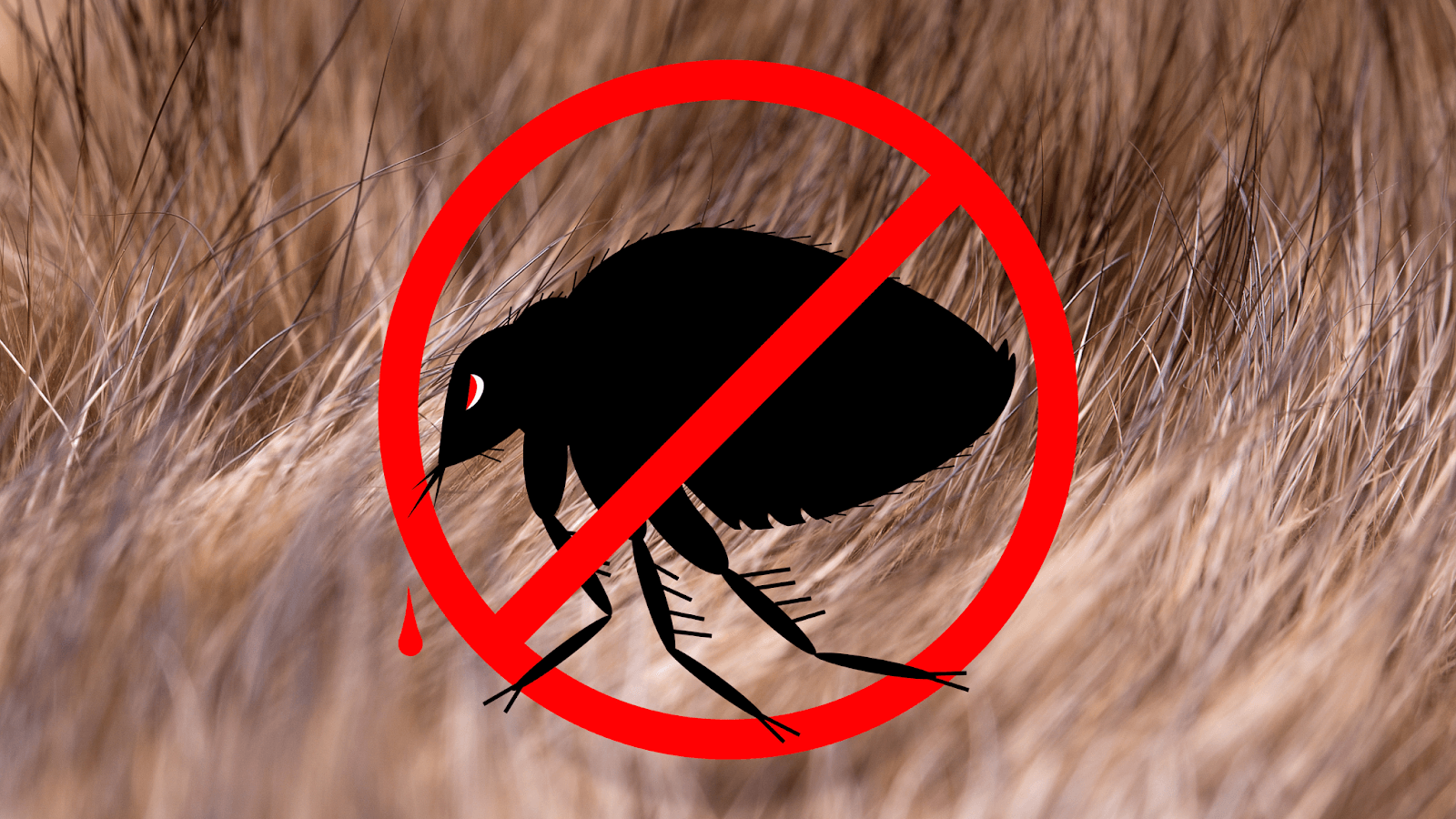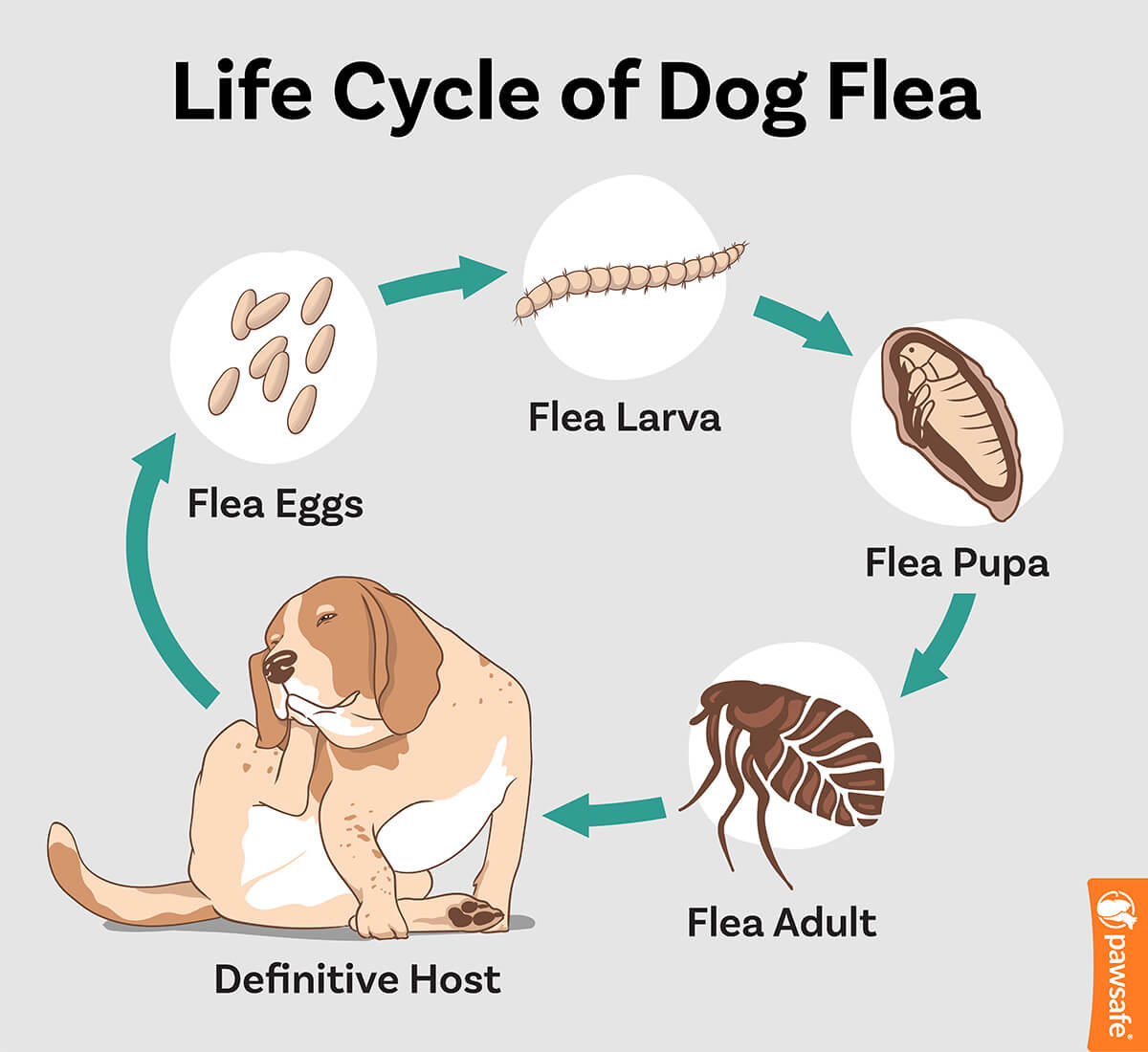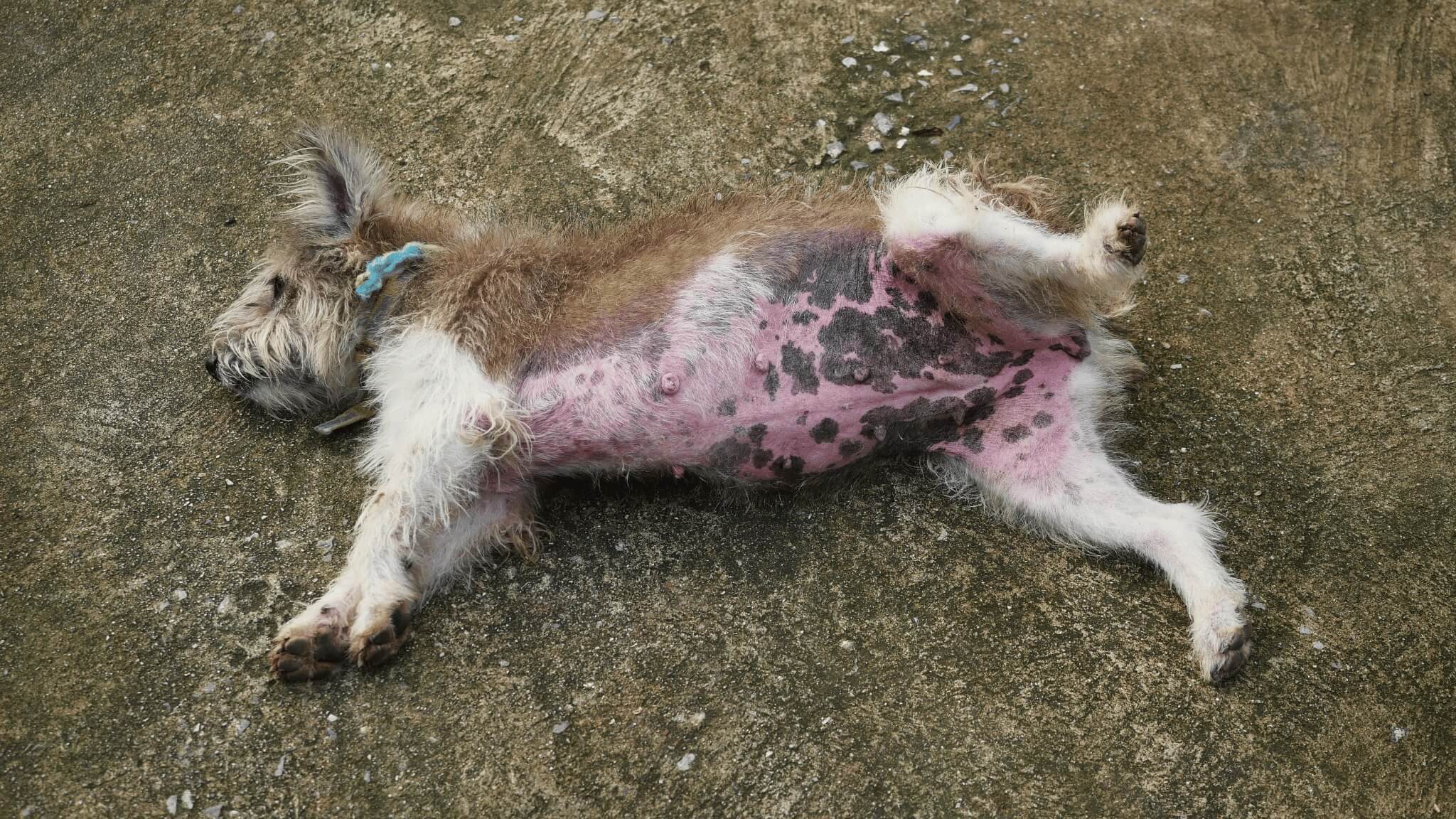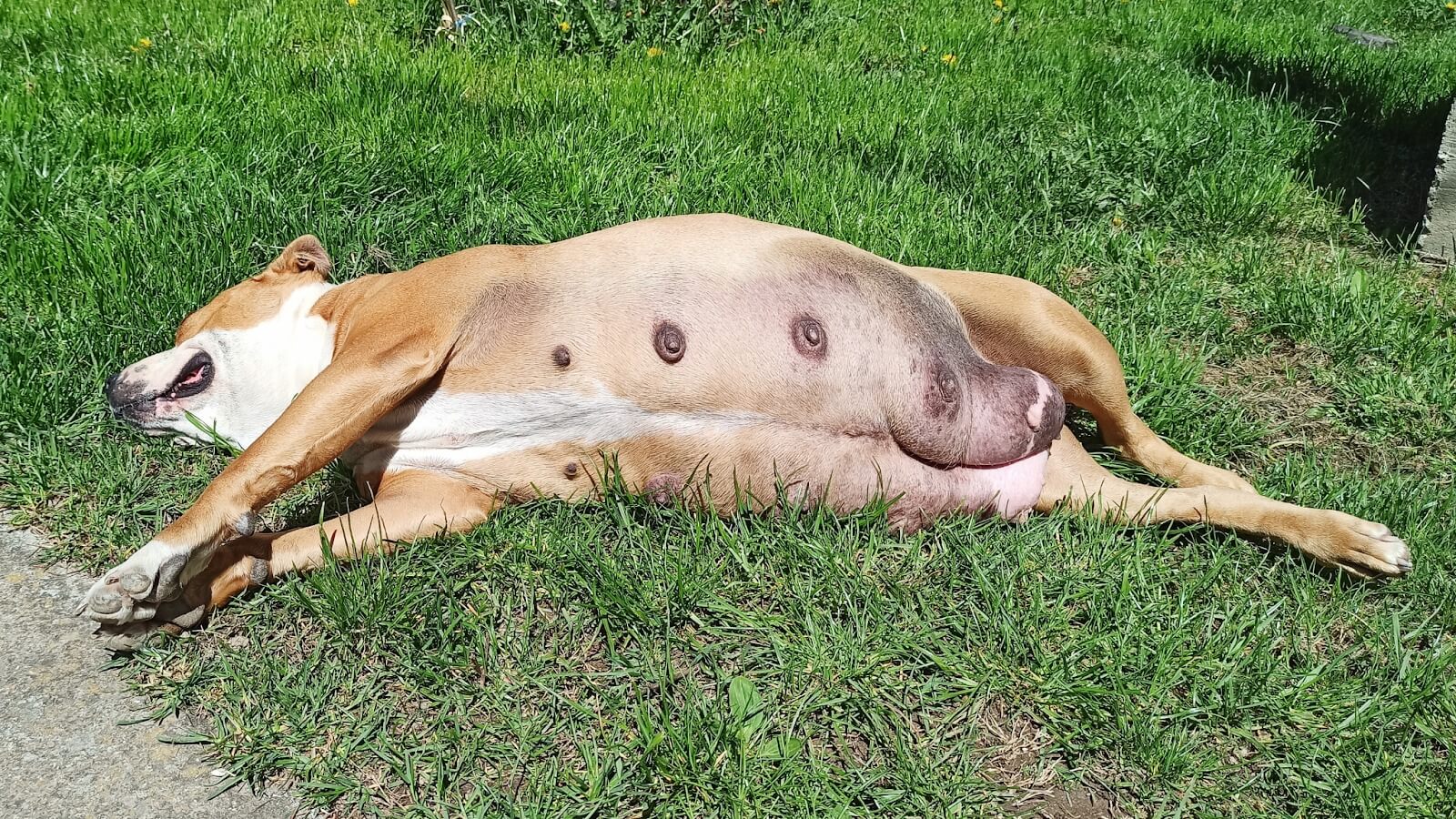As a pet parent, it is vital to know how to tell if your dog has fleas and take the necessary steps to prevent and treat them. Fleas are one of the most common parasites that can affect your dog. These tiny, wingless insects feed on your dog’s blood, causing itching, irritation, and discomfort. If left untreated, fleas can lead to more severe health problems for your furry friend, such as anemia or tapeworms. Research also shows they carry huge amounts of yucky bacteria.
Keeping your dog’s coat clean and fresh is a crucial part of pet hygiene and can complement your efforts to control ticks and fleas. One product to consider for this purpose is PawSafe’s 5-in-1 Dog Shampoo, which is formulated to cleanse, condition, and deodorize your dog’s fur.
However, even with the best grooming practices, your dog can still be susceptible to fleas. To know for sure if your dog has a flea infestation and for the most reliable advice on treatment, we’ve consulted the MSD Veterinary Manual and Pets & Parasites to provide you with trusted information to help you keep your furry friend flea-free.
So, How Do You Tell If Your Dog Has Fleas?
One of the most obvious signs that your dog has fleas is excessive scratching and biting. Fleas are incredibly itchy, and your dog will try to relieve the discomfort by scratching or biting their skin. You may also notice red, irritated skin, scabs, or hot spots on your dog’s body, especially around the tail, belly, and legs.
Another sign of fleas is the presence of flea dirt, which looks like small black specks on your dog’s skin or fur.
Flea dirt is actually flea feces, and it contains digested blood that fleas have taken from your dog.
Fleas are common parasites that can infest your dog’s fur. They are tiny, wingless insects that feed on blood and can cause severe itching, skin irritation, and even anemia in your dog. Here are some ways to tell if your dog has fleas:
- Excessive scratching and biting: If your dog is scratching and biting at their skin more than usual, it could be a sign of fleas. Flea bites can cause intense itching, and your dog may try to relieve the discomfort by scratching or biting at the affected area.
- Visible fleas or flea dirt: Fleas are tiny, but you may be able to see them moving around on your dog’s fur. You may also notice small, black specks on your dog’s skin or fur. This is flea dirt, which is actually flea feces.
- Red, irritated skin: Flea bites can cause redness and irritation on your dog’s skin. You may notice small bumps or scabs on their skin, especially around their neck, back, and tail.
- Hair loss: Severe flea infestations can cause hair loss in your dog. This is usually due to excessive scratching and biting, which can damage their skin and hair follicles.
If you suspect that your dog has fleas, it is important to act quickly to prevent the infestation from spreading. You should start by giving your dog a thorough bath with a flea shampoo. After the bath, use a flea comb to remove any remaining fleas or flea dirt from your dog’s coat. You should also wash your dog’s bedding and vacuum your home thoroughly to remove any fleas or eggs that may be hiding in carpets, furniture, or bedding. If the infestation is severe, you may need to consult with your veterinarian to get a prescription for a stronger flea medication.
The Number One Best Way to Tell if Your Dog has Fleas
Recently, one study compared techniques for finding fleas on dogs and found that the most effective method. The study looked at two ways to check for fleas on dogs and cats: the wet blotting paper technique (WBPT) and using a microscope to examine the fur (MT). The study found that the wet blotting paper method was generally more effective in detecting fleas or signs of fleas.
In simpler terms, if you’re trying to check your pet for fleas, the wet blotting paper method is more likely to give you accurate results, especially when the flea infestation is low. This method involves putting some of your pet’s fur on blotting paper, adding water, and then looking for reddish spots, which indicate the presence of fleas or their waste. Overall, it seems like a more reliable way to find out if your pet has fleas compared to using a microscope to look at the fur.
But How Do You Use the Wet Blotting Paper Method to Tell if Your Dog has Fleas?
The Wet Blotting Paper Technique (WBPT) is a simple method you can perform at home to check for fleas on your dog. Here’s how you can do it:
- First, brush your dog’s coat to collect some fur and skin debris. You can use a regular pet brush or comb for this.
- Place the collected fur and skin debris evenly on a piece of blotting paper. You can use a white paper towel as an alternative if you don’t have blotting paper.
- Add 3 drops of sterile water to the material on the paper. If you don’t have sterile water, tap water should work for this home test.
- Let the paper dry for about 10 minutes.
- If there are any leftover particles or debris on the paper, you can gently tap the flip side of the paper to remove them.
- After the paper has dried, look for areas with reddish circles or “aureoles.” These indicate the presence of fleas or flea waste.
The appearance of reddish aureoles on the blotting paper generally means that your dog has a flea infestation and you should consider appropriate treatment options.
Understanding Flea Infestation in Dogs
Identifying Fleas
Fleas are tiny, wingless insects that feed on the blood of their hosts. They are reddish-brown in color and are about 1/8 inch in size. Fleas are often found on the neck, back, and tail of dogs, where they can easily hide in the fur. If you suspect that your dog has fleas, you should look for the following signs:
- Flea dirt: This is the feces of fleas and looks like small black specks on your dog’s skin or fur.
- Scratching: If your dog is scratching excessively, it could be a sign of flea infestation.
- Red or irritated skin: Flea bites can cause your dog’s skin to become red, irritated, and itchy.
- Hair loss: In severe cases, flea infestations can cause your dog to lose hair.
Related:
Flea Life Cycle
Understanding the flea life cycle is essential in controlling and preventing flea infestations. Fleas have a complex life cycle that consists of four stages: egg, larva, pupa, and adult.
- Egg: Flea eggs are laid on the host and then fall off onto the ground. They hatch within 2-14 days.
- Larva: The larval stage lasts for 5-11 days. Larvae feed on organic matter, such as flea dirt, and molt twice before spinning cocoons.
- Pupa: The pupal stage can last from a few days to several months. Fleas in the pupal stage are protected by their cocoons and can survive in the environment for long periods.
- Adult: The adult flea emerges from the cocoon when it detects the presence of a host. Once on the host, the flea begins feeding and mating, and the cycle starts again.
It is important to note that adult fleas represent only a small percentage of the flea population. The majority of the flea population exists in the form of eggs, larvae, and pupae in the environment. Therefore, it is crucial to treat both your dog and the environment to effectively control flea infestations.
Can My Dog Have Fleas if I Don’t See Them?
It is possible for your dog to have fleas even if you don’t see them. Fleas are small and fast, making them difficult to spot. In fact, most of the time, you won’t see the fleas themselves, but rather the signs of their presence.
One of the most common signs of fleas is flea dirt. Flea dirt looks like small black specks on your dog’s skin or in their fur. It is actually flea feces and is made up of digested blood. You can check for flea dirt by using a flea comb on your dog and then wiping the comb on a white paper towel. If you see small black specks on the paper towel, it is likely flea dirt.
Another sign of fleas is excessive scratching, biting, or licking. Flea bites can be very itchy and uncomfortable for your dog, so they may scratch or bite at the affected area. If your dog is constantly scratching or biting at themselves, it may be a sign that they have fleas.
You may also notice red, irritated skin on your dog. Flea bites can cause an allergic reaction in some dogs, leading to redness and irritation. If you see red, irritated skin on your dog, it may be a sign that they have fleas.
In conclusion, just because you don’t see fleas on your dog doesn’t mean they don’t have them. Keep an eye out for flea dirt, excessive scratching or biting, and red, irritated skin to determine if your dog has fleas. If you suspect your dog has fleas, it’s important to take action right away to prevent the problem from getting worse.
Recognizing Signs of Fleas in Dogs
If you suspect that your dog has fleas, it’s important to act quickly to prevent an infestation. Here are some signs to look out for:
Excessive Scratching, Licking or Biting
One of the most common signs of fleas in dogs is excessive scratching, licking or biting. If your dog seems to be constantly scratching, biting or licking certain areas of their body, it may be a sign that they have fleas. Flea bites can be very itchy and uncomfortable for dogs, which is why they may try to relieve the itch by scratching, licking or biting.
Flea Dirt
Flea dirt is the feces of fleas and is a telltale sign of an infestation. Flea dirt looks like small black specks and can often be found on your dog’s skin or in their fur. To check for flea dirt, part your dog’s fur and look for small black specks on their skin. You can also place a white towel under your dog and brush their fur to see if any black specks fall onto the towel.
Flea Eggs
Flea eggs are tiny, white, oval-shaped eggs that are about the size of a grain of sand. They are often found in your dog’s fur and can be difficult to see with the naked eye. However, if you see small white specks in your dog’s fur, it could be a sign that they have flea eggs.
Hair Loss
If your dog has fleas, they may experience hair loss in certain areas of their body. This is often due to excessive scratching, biting or licking, which can cause hair to fall out. If you notice that your dog has bald patches or thinning hair, it could be a sign that they have fleas.
Flea Allergy Dermatitis
Flea allergy dermatitis is a skin condition that is caused by an allergic reaction to flea saliva. Dogs with flea allergy dermatitis may experience intense itching, redness, and inflammation of the skin. If you notice that your dog is experiencing these symptoms, it’s important to take them to the vet as soon as possible.
By recognizing the signs of fleas in dogs, you can take action to prevent an infestation and keep your furry friend healthy and happy.
Checking for Fleas on Your Dog
Visual Inspection
Pay particular attention to areas where fleas are most likely to hide, such as the base of the tail, behind the ears, and under the legs. If you see any signs of fleas, it’s time to move on to the next step.
Flea Comb Test
After each pass of the comb, dip it into the soapy water to drown any fleas that you’ve caught. Continue combing your dog’s fur until you’ve covered their entire body. If you find fleas on the comb, it’s time to move on to the next step.
White Towel Test
Next, use your fingers to massage your dog’s fur, causing any fleas to jump onto the towel. After a few minutes, carefully examine the towel for any signs of fleas. If you find fleas on the towel, it’s time to take action.
In conclusion, checking for fleas on your dog is essential for their health and well-being. By conducting a visual inspection, performing the flea comb test, and using the white towel test, you can detect fleas early and prevent further infestations.
Professional Diagnosis
If you suspect your dog has fleas, it is important to seek a professional diagnosis to confirm your suspicions. A veterinarian is the best person to diagnose and treat fleas on your dog.
During a professional diagnosis, the veterinarian will examine your dog’s skin and coat for signs of fleas, such as flea dirt or adult fleas. Flea dirt is the feces of fleas and appears as small black specks on your dog’s skin and coat. The veterinarian may also use a flea comb to remove any adult fleas or flea dirt from your dog’s coat.
If fleas are found, the veterinarian may recommend a flea treatment plan for your dog. This may include a flea bath, topical flea medication, or oral flea medication. The veterinarian may also recommend treating your home and yard to prevent a flea infestation.
It is important to follow the veterinarian’s recommendations for treating fleas on your dog and in your home to ensure the fleas are completely eradicated. Failure to do so may result in a re-infestation and continued discomfort for your dog.
Preventing Flea Infestation
Regular Grooming
Regular grooming is a crucial step in preventing flea infestation in dogs. Brushing your dog’s coat regularly can help remove fleas, flea eggs, and flea dirt. It also helps distribute natural oils throughout the coat, which can help prevent dry skin and promote a healthy coat. Use a flea comb to remove any fleas you find during grooming.
Flea Preventive Products
Flea preventive products are available in various forms, such as topical treatments, oral medications, and flea collars. These products can help prevent flea infestation by killing fleas and their eggs. Consult with your veterinarian to determine the best flea preventive product for your dog. Be sure to follow the instructions carefully when using these products.
Maintaining Clean Surroundings
Maintaining a clean environment is essential in preventing flea infestation. Regularly vacuuming carpets, rugs, and furniture can help remove fleas and their eggs. Wash your dog’s bedding and toys regularly in hot water. Treat your home and yard with flea control products to eliminate any fleas that may be present.
By following these preventive measures, you can help keep your dog free from fleas and prevent flea infestation in your home.
Frequently Asked Questions (FAQs)
What are the signs and symptoms of fleas in dogs?
What kills fleas on dogs instantly?
How do you check your house for fleas?
Can you see fleas on dogs?
See this video on the fastest way to get rid of fleas on your pet:
Dog fleas symptoms on humans
While fleas are more commonly associated with dogs, they can also bite humans and cause symptoms such as itching, redness, and swelling. If you suspect that you have been bitten by fleas, it is important to wash the affected area with soap and water and apply an anti-itch cream or ointment. It is also important to treat your dog for fleas to prevent further infestation.
Final Thoughts
In conclusion, it is important for dog owners to be vigilant in checking their pets for fleas. Fleas can cause discomfort and health issues for dogs, and can also infest homes and other pets. By regularly inspecting your dog’s coat and behavior, you can catch a flea infestation early and take steps to treat it.
Some key signs that your dog may have fleas include excessive scratching, biting, or licking, as well as the presence of flea dirt or actual fleas on their coat. It’s important to note that not all dogs will show these signs, so it’s important to check your dog regularly even if they seem healthy.
If you do find that your dog has fleas, there are a variety of treatment options available. From topical treatments to oral medications, there is a solution that can work for your pet and your lifestyle. It’s important to follow the instructions carefully and continue treatment for the recommended amount of time to ensure that the fleas are completely eradicated.
Remember, prevention is key when it comes to fleas. Regularly grooming your dog, vacuuming your home, and keeping your yard clean can all help to prevent a flea infestation from occurring in the first place. By taking these steps, you can keep your dog healthy and happy, and avoid the hassle and expense of dealing with a flea problem.












